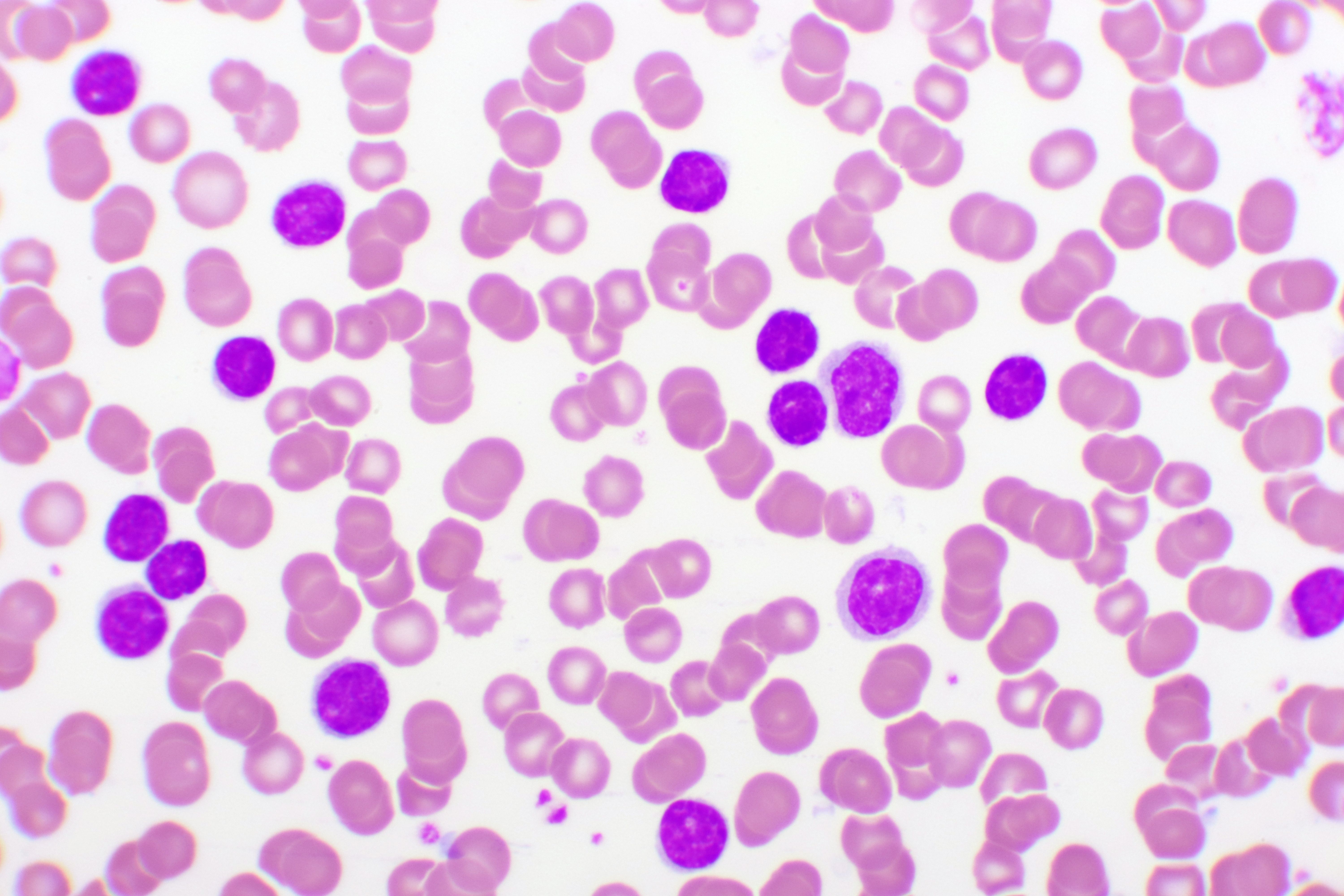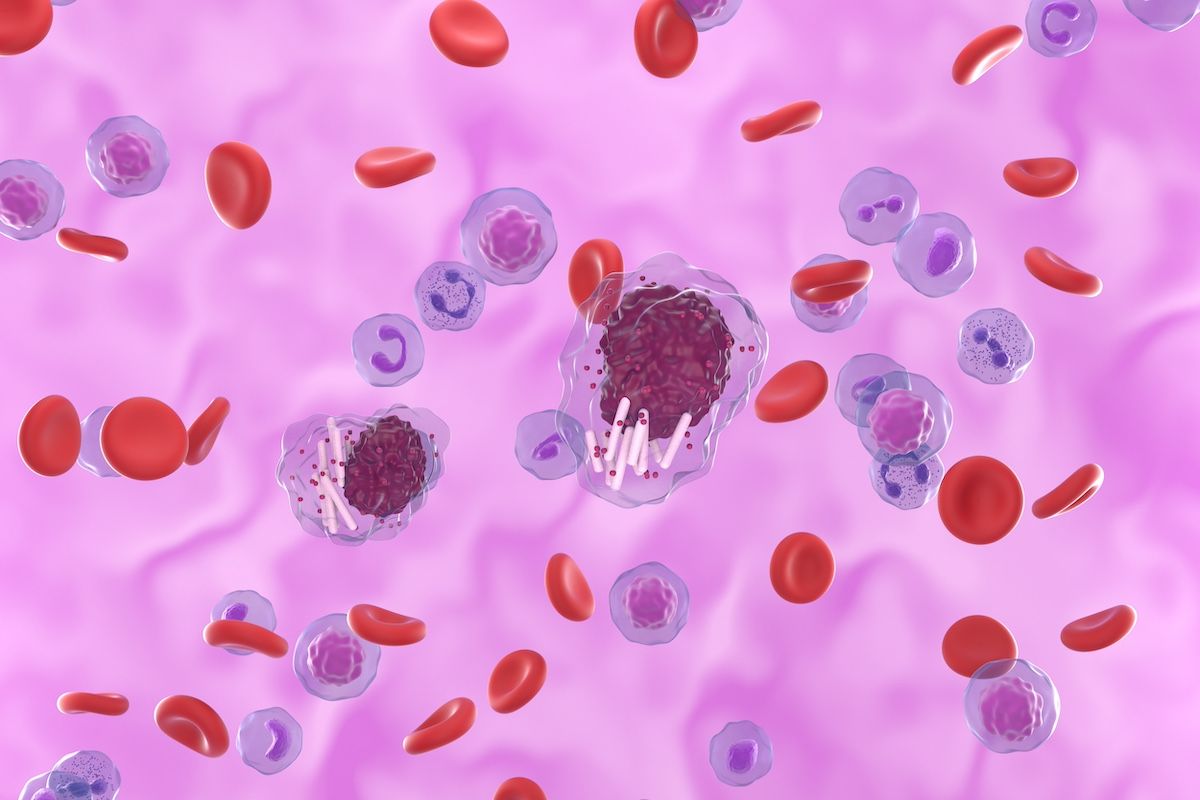News
Article
Novel Relapsed/Refractory CLL Therapies Have Similar Safety Profiles
Author(s):
Key Takeaways
- Novel targeted therapies for R/R CLL, including venetoclax plus rituximab, acalabrutinib, and zanubrutinib, have favorable safety profiles.
- Bendamustine plus rituximab showed a lower risk of severe adverse events compared to other therapies in the analysis.
The new report is an attempt to provide comprehensive safety data on the rapidly changing treatment landscape for relapsed or refractory chronic lymphocytic leukemia (CLL).
A new comparison of the safety profiles of novel targeted therapies for relapsed or refractory chronic lymphocytic leukemia (R/R CLL) suggests they all have similar—and favorable—safety profiles.
The report, which was published in Therapeutic Advances in Medical Oncology, found the selective B-cell lymphoma 2 inhibitor venetoclax (Venclexta) in combination with the anti-CD20 monoclonal antibody rituximab (Rituxan), the Bruton tyrosine kinase (BTK) inhibitor acalabrutinib (Calquence), and the BTK inhibitor zanubrutinib (Brukinsa) all have acceptable safety profiles in patients with relapsed or refractory (R/R) CLL.1
Acalabrutinib, zanubrutinib, and venetoclax plus rituximab all had similar frequencies of grade 3 or above AEs, serious AEs, and treatment discontinuations due to death. | Image Credit: © fizkes - stock.adobe.com

The authors, of Poland’s Jagiellonian University, said the recent wave of new targeted therapies for CLL has been welcome news, but has also raised questions.
“While these advancements have significantly improved patient outcomes, they have also brought new challenges in terms of understanding the safety profiles of these therapies, especially in often heavily pretreated patients,” they wrote.
Although all of the therapies have been the subject of studies evaluating safety, most of those studies have been limited in scope, the investigators said, and have not included a comprehensive evaluation of the range of available therapies. They therefore embarked on a network meta-analysis (NMA), allowing them to get a broader look at comparisons using a range of studies.
“This approach is particularly valuable in the setting of CLL, where multiple agents with different mechanisms of action have emerged,” they wrote.
The investigators conducted a systematic literature review of trials for patients with R/R CLL and found 14 randomized trials that met their inclusion criteria. Studies were included if at least 80% of participants had R/R CLL. Most of those studies were phase 2 or phase 3 multicenter open-label trials; 3 were double-blind trials; 1 was a single-center trial.
When adverse events (AEs) were taken as a whole, the investigators said they found no significant differences in terms of overall AEs. When their analysis was segmented by severity, though, they found bendamustine (Treanda) plus rituximab outperformed the other therapies. Patients receiving bendamustine plus rituximab had a lower risk of grade 3 or higher AEs compared with ibrutinib (Imbruvica; risk ratio [RR], 0.62; 95% credible interval [CI], 0.40-0.86), acalabrutinib (RR, 0.69; 95% CI, 0.45-0.94), zanubrutinib (RR, 0.64; 95% CI, 0.42-0.91), and venetoclax plus rituximab (RR, 0.87; 95% CI, 0.79-0.96).
“The results of the NMA highlighted the favorable safety profile of bendamustine + rituximab, which is reflected in clinical practice guidelines recommending this regimen, particularly for older patients and those with comorbidities,” they wrote.
Acalabrutinib, zanubrutinib, and venetoclax plus rituximab all had similar frequencies of grade 3 or above AEs, serious AEs, and treatment discontinuations due to death.
“There were no significant differences in the safety profiles regarding hematological events, events affecting the quality of life, and infections for most comparisons of venetoclax + rituximab with BTK [inhibitors],” the researchers noted.
They did find, however, that among BTK inhibitors, zanubrutinib use carried a higher risk of hypertension (RR, 2.96; 95% CI, 1.74-5.16) and bleeding (RR, 1.38; 95% CI, 1.06-1.81) compared with acalabrutinib.
Still, previous research has suggested that second-generation BTK inhibitors, such as zanubrutinib and acalabrutinib, have superior cardiac safety profiles than first-generation BTK inhibitors, such as ibrutinib. A study published last year comparing zanubrutinib and ibrutinib in patients with R/R CLL found the former resulted in fewer discontinuations due to AEs and fewer cardiac events.2
The authors of the present study wrote that there were differences in the data collected and reported among the 14 studies in their analysis, and some studies used wide confidence intervals in their comparisons.1 They said longer-term research is warranted to more comprehensively assess the safety profiles of the various therapies.
For now, though, these data indicate acalabrutinib, zanubrutinib, and venetoclax plus rituximab all appear to have “relatively similar safety profiles.” This evidence suggests the new therapies may be a preferable option in the setting of R/R CLL, according to the authors.
References
- Monica M, Reczek M, Kawalec P. Comparative safety of novel targeted therapies in relapsed/refractory chronic lymphocytic leukemia: a network meta-analysis. Ther Adv Med Oncol. 2024;16:17588359241285988. doi:10.1177/17588359241285988
- Brown JR, Eichhorst B, Hillmen P, et al. Zanubrutinib or ibrutinib in relapsed or refractory chronic lymphocytic leukemia. N Engl J Med. 2023;388(4):319-332. doi:10.1056/NEJMoa2211582





